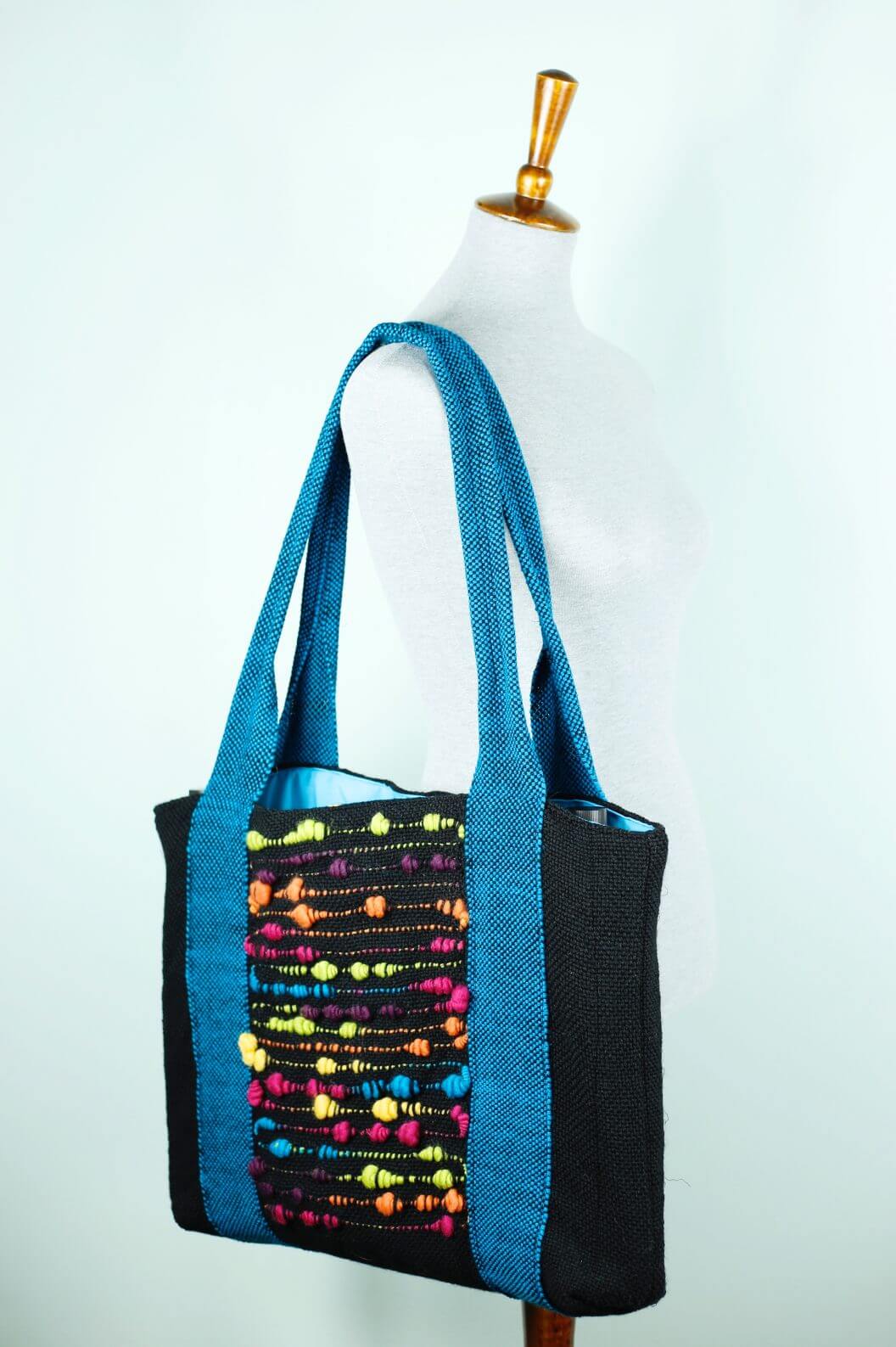Sew this fun and versatile bag with fabric made on the spinning wheel and a rigid heddle loom!
This post will show you how to create a bag just like (or similar to) the bag we have here.
You will need:
A rigid heddle loom with a weaving width of at least 10”, we’ve used the Presto for this project.
8 dent heddle.
A sewing machine.
1 yard lining fabric.
Worsted weight wool yarn for the sides, handles and the beehive weave background.
Approx. 800 yards of black
Approx. 120 yards of blue
Approx. 20 yards of Beehive yarn
Our brightly colored “Beehive” yarn was spun on a Kromski Fantasia spinning wheel equipped with a Jumbo Flyer Set.
Don’t have a Fantasia? This can also be done on the Kromski Sonata with the addition of the the Magnetic Flyer Head Set and a Jumbo Flyer !
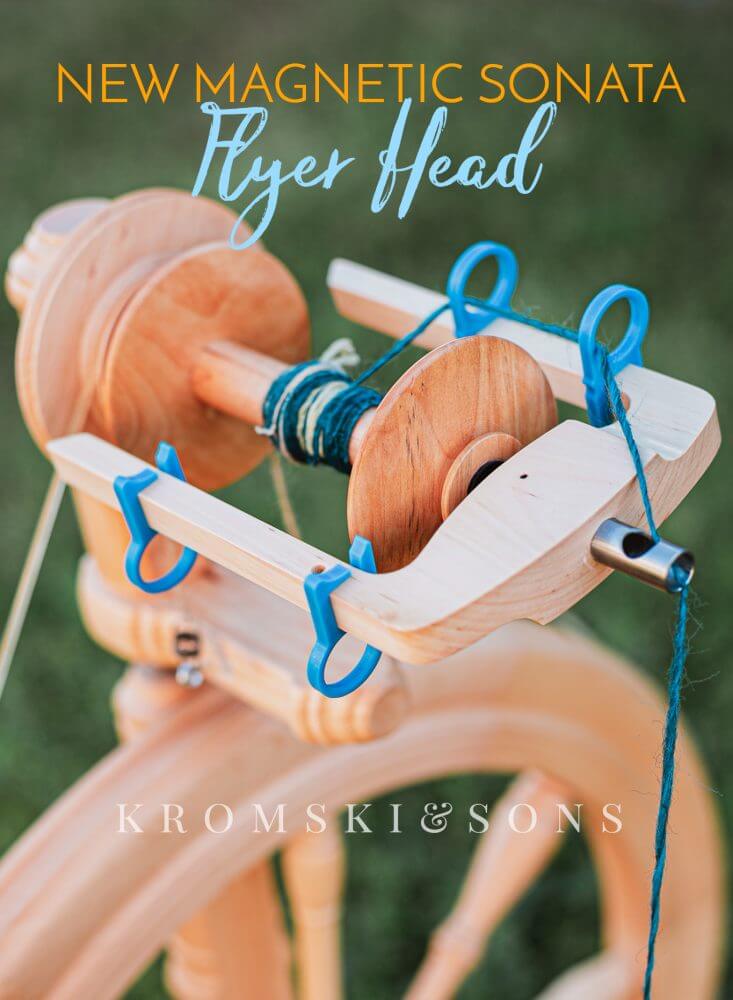
However, the best option would be the Kromski Minstrel wheel and the Great Flyer. The Great Flyer was designed to create art yarn. The extra large bobbin and orifice would hold this yarn with ease. Just look at the difference in size!
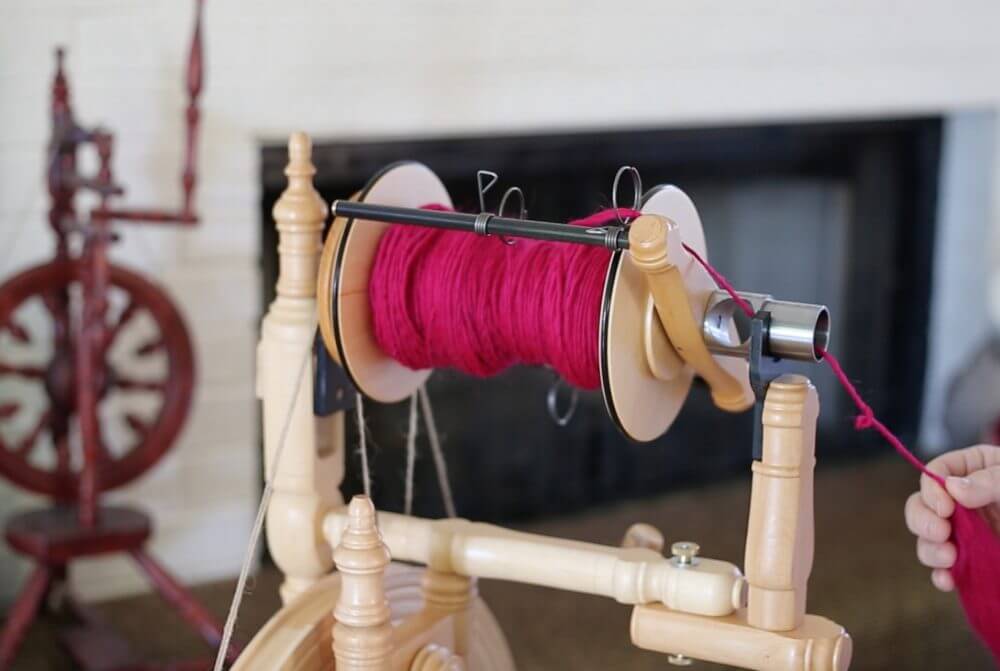
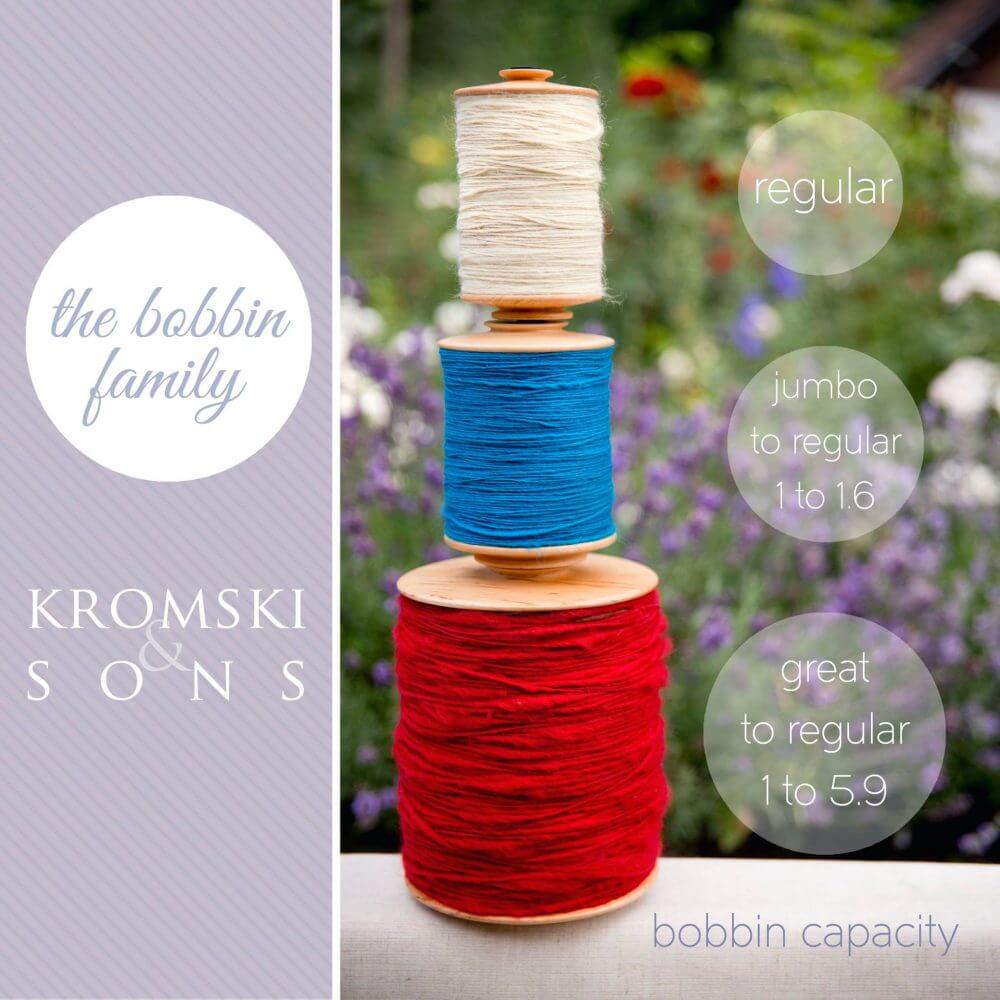
If you’ve never made this type of yarn before, don’t worry, with a bit of practice it’s actually much easier than you might think. And after all, it’s Art Yarn – it’s all beautiful!
For our yarn we used Polish Merino roving. It’s a nice sturdy yarn(without being scratchy or hard on the hands) and it comes in a multitude of colors.
Begin by spinning a ‘thick and thin’ single. This is simply a bobbin filled with roving that is literally spun so that some of it is thick and some f it is thin. The sections of varying size should be about 4”-6”. As you can see, we changed color quite often on ours.
Next, on a fresh bobbin, you will need to spin some thin yarn. We chose to use the same roving and change the color periodically on this too.
Now it’s time to make your beehives!
They will be made while plying. Holding them together in a normal fashion, ply enough just to get things started. Now as you come to a thick spot from the 1st bobbin, you will allow it to wrap around the thin yarn from the 2nd bobbin. As soon as the thick area is wrapped, use the hand that is holding that strand and gently pinch the base of the thick spot and while holding the thin yarn steady, PUSH the beehive towards the wheel. As quickly as you have done that (you’re still treading), bring the thin yarn up towards the wheel at an angle. I call this kind of a hick up motion. This will lock the beehive in place. You will continue to ply, normally, the thin area that follows and repeat the move on the next thick spot. This is shown briefly in the beginning of this video. https://www.youtube.com/watch?v=WuWK6B8y-nI&t=13s. The following are screen shots from the video.
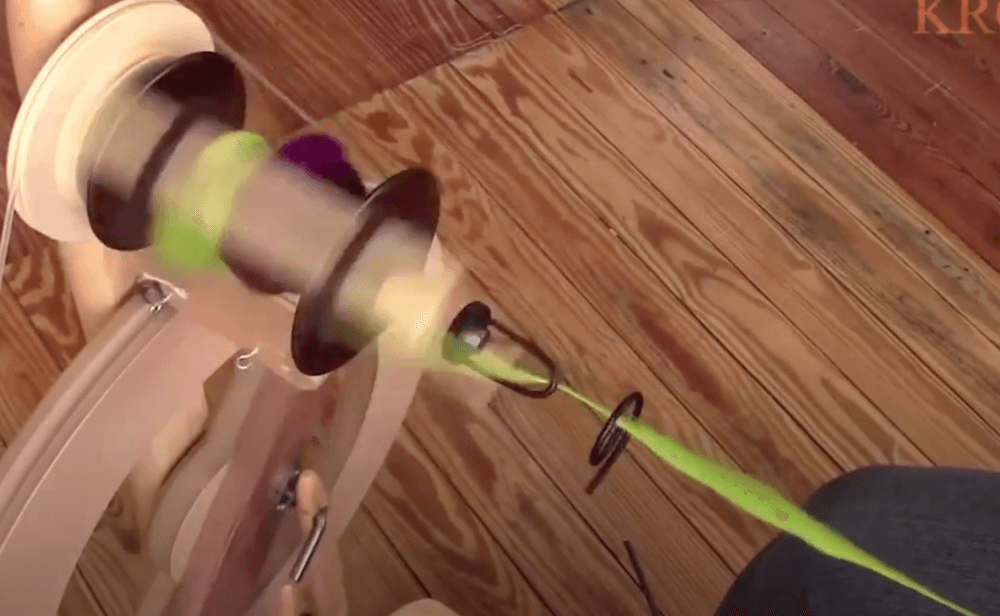
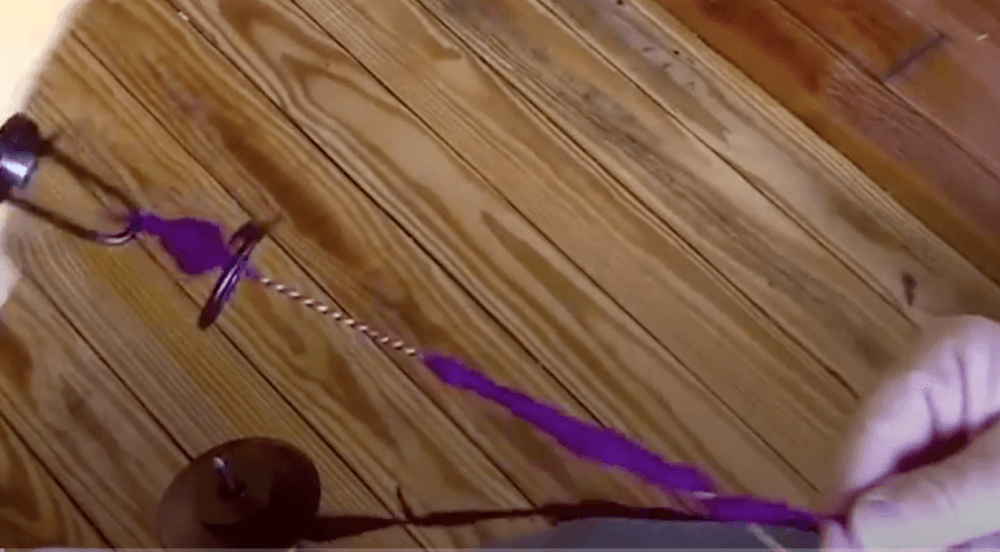
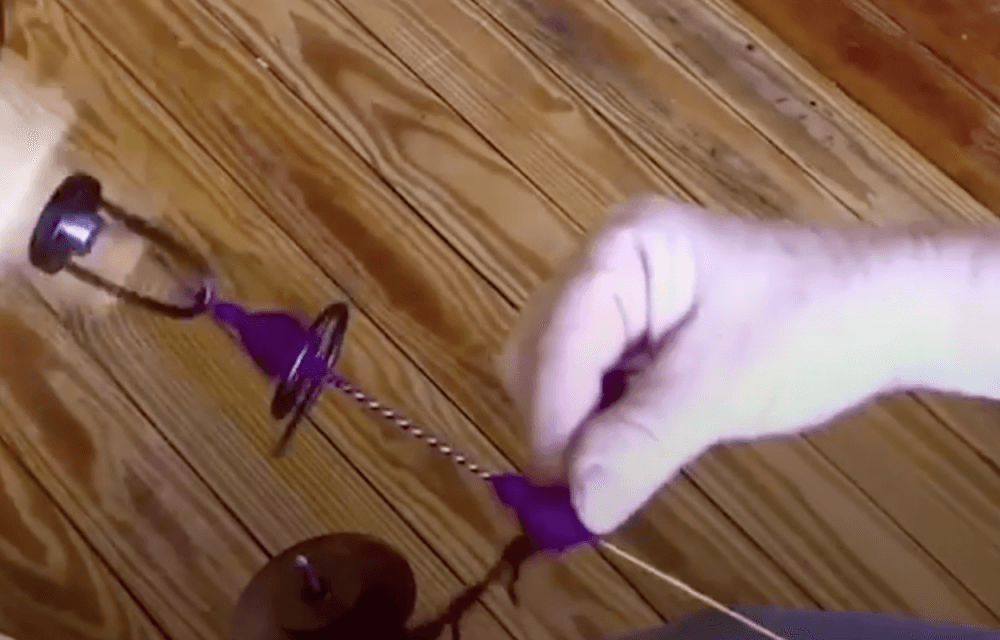
Once you have the yarn complete, wet finish it with a gentle soak and allow it to hang to dry. This will assure that everything stays in place as we continue.
Once the yarn is dry, it’s time to start weaving. Let’s make the center panel first.
Warp the loom, equipped with an 8 dent heddle, with 78 ends of the black yarn to a length of 1.5 Yards. If you’re weaving on a 10″ Presto Loom as we are here, this will be the entire width of the heddle. Using black as the weft, weave 4” to start. It will be easier to handle the fabric later if you do a hem stitch at the start and finish of all weaving.
Lay the beehive yarn into the next shed. You may need to adjust the warp to lay nicely in the grooves of the hives. Don’t worry about tying in the end. It will be secured when the bag is sewn.
Weave one pass of the black in the next shed. When pressing the heddle forward, tilt it s that the yarn is pushed under the beehive. This will help prevent holes and a loosely woven fabric. Weave 3 more passes with the black. Again, it is not necessary to wrap the colored yarn with the black as you weave. This too will be secured by the sewing.
Weave in this way, beehive followed by 4 passes of black, until you have done a total of 18 colored rows. Cut the Beehive yarn, leaving a tail 2-3 inches long. The weave should measure about 13” at this point.
Continuing on the same warp, weave 8” of black. This will be the bottom of the bag.
Repeat the process of the beehive followed by 4 passes of black 18 times on the remainder of the warp . Weave about 4 inches of black at the end and finish with ah hem stitch. This will help ensure it does not fall apart before we get it sewn! Carefully remove it from the loom.

Warp 40 ends in black, again with a length of 1.5 yards.
Weave this entirely with black. This will become the side panels on the bag.
Now the straps must be woven. The warp for this is again black. It is 4 yards long, 28 ends wide. For our bag the weft is blue. Choose something that will coordinate with the yarns you have chosen.
Now the straps must be woven. The warp for this is again black. It is 4 yards long, 28 ends wide. For our bag the weft is blue. Choose something that will coordinate with the yarns you have chosen.
That’s it for the weaving!
Its is recommended that the fabric pieces. just like the yarn, be wet finished. If you did not do the hem stitch, in order to prevent unraveling, the ends must 1st be secured. For each raw edge, place a piece of dissolvable stabilizer (or in a pinch you can just use paper) under the ends of the weave. Place another on the top creating a sandwich with the raw edge of the fabric between. Sew several rows of a zig zag stitch along the edges. Remove the paper if used, and continue with the wet finishing as usual.
Once everything is dry we can begin putting the pieces together.
Stitch the side panels to the center panel by placing the side panel on top and overlapping it slightly (not right sides together as you normally do when sewing). Try to catch just the edge of the center panel, keeping the beehives pushed out of the way as you sew.
Fold the strap in half and sew the ends together making one big loop.
Place the strap along one side of the center panel and stitch in place. You may need to pull some of the hives aside again as you sew.
Stop sewing one inch from the top.
Center the handle and sew the other side in the same way.
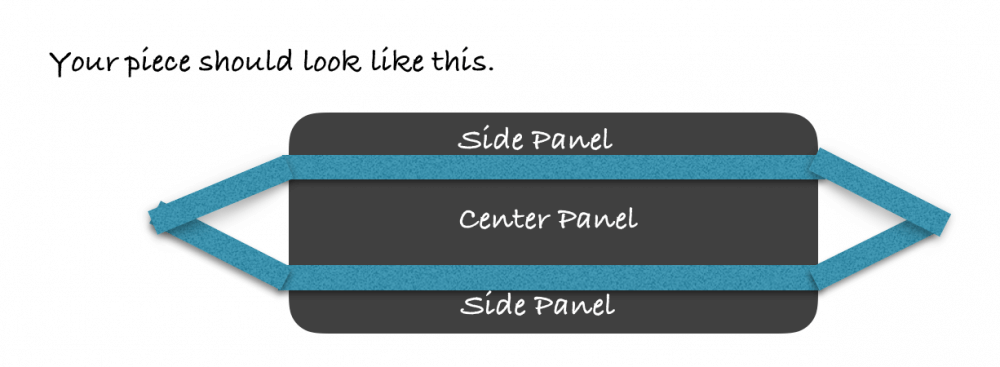
Measure the body of the bag and cut the lining fabric to this measurement.
Fold the bag in half, right sides together and sew up the side seams.
For added stability, open the side seams and stitch them down at the edges. Be sure you don’t sew through both sides of the bag.
The seams will show on the outside of the bag, so be as straight as possible.
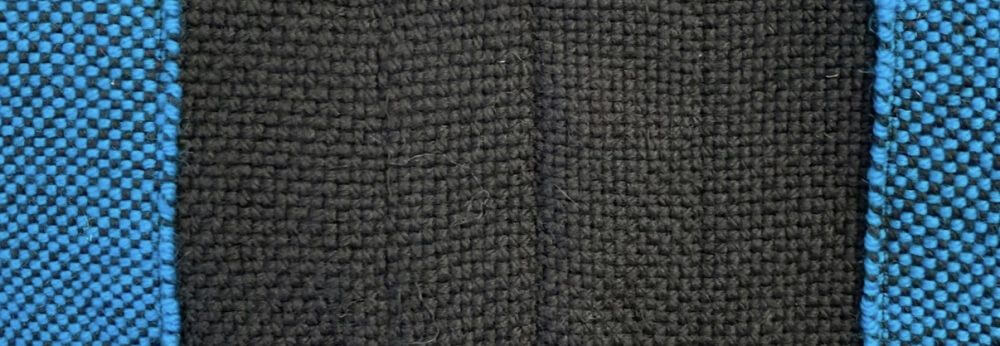
Next, you’ll need to box the corners. With the bag inside out, fold the bag so that the side seam is lined up with the center of the bag bottom. Sew across the bag where the dotted line is on the diagram.
Repeat this on the other side.
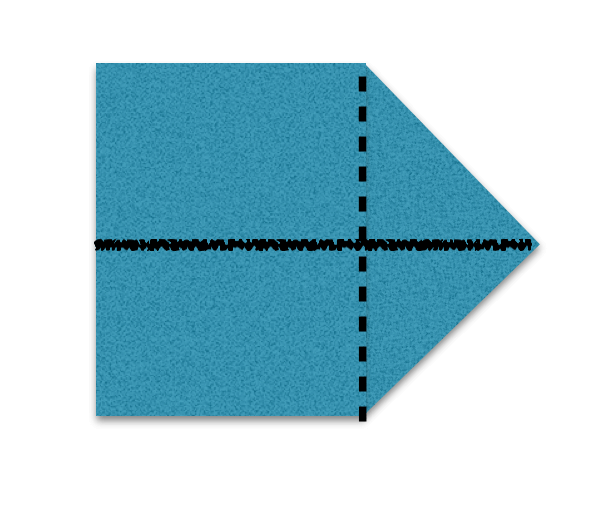
Sew the lining together by sewing the side seams first and then boxing the corners in the same way as the bag body. Turn the bag right side out. Leave the lining inside out. Slip the bag into the lining. Tuck the handles down between the lining and the bag body.
Stitch along the top of the bag. Leave a 6” hole for turning.
Bring the bag through the hole and push the lining in place.
Fold down the open seam and top stitch around the entire bag top to finish.
I sewed the handles closed lengthwise. It’s isn’t necessary, it just fits my shoulder better that way.
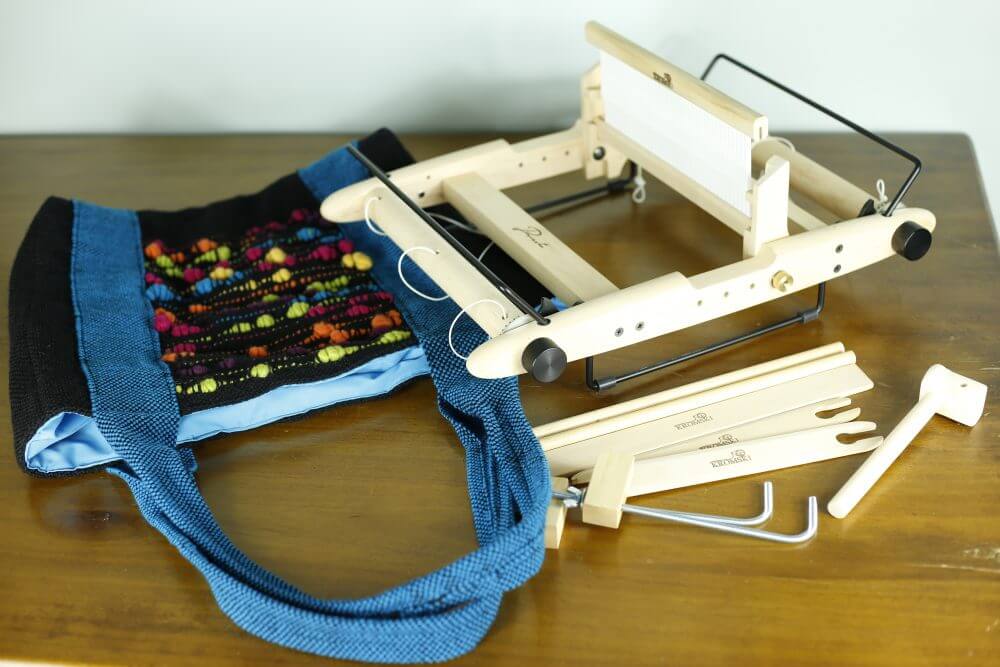
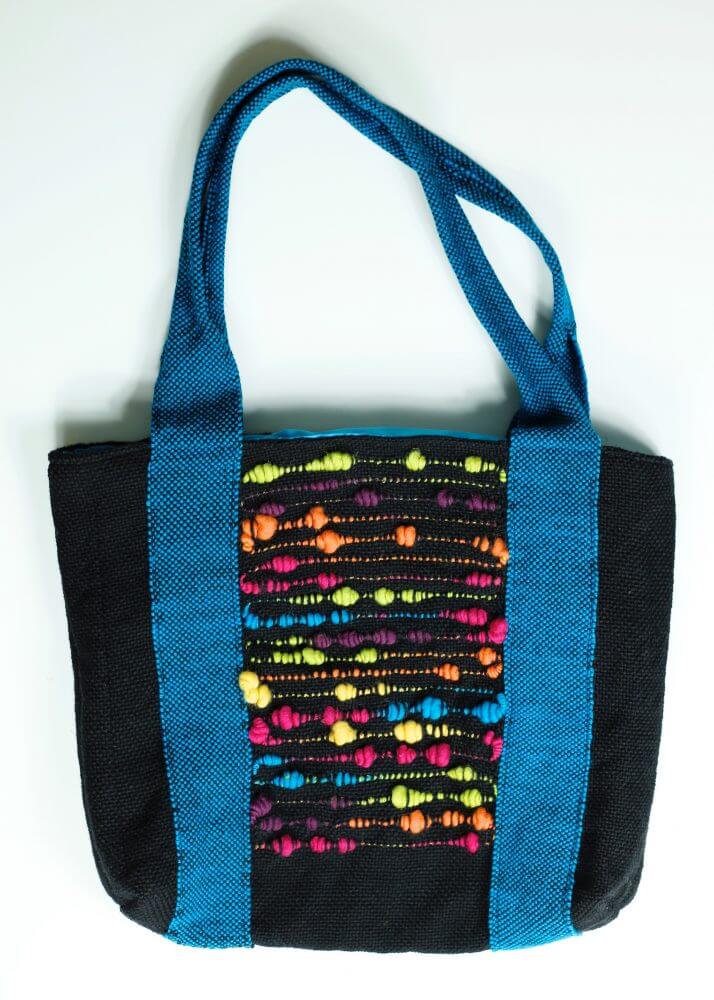
Thanks for watching.




